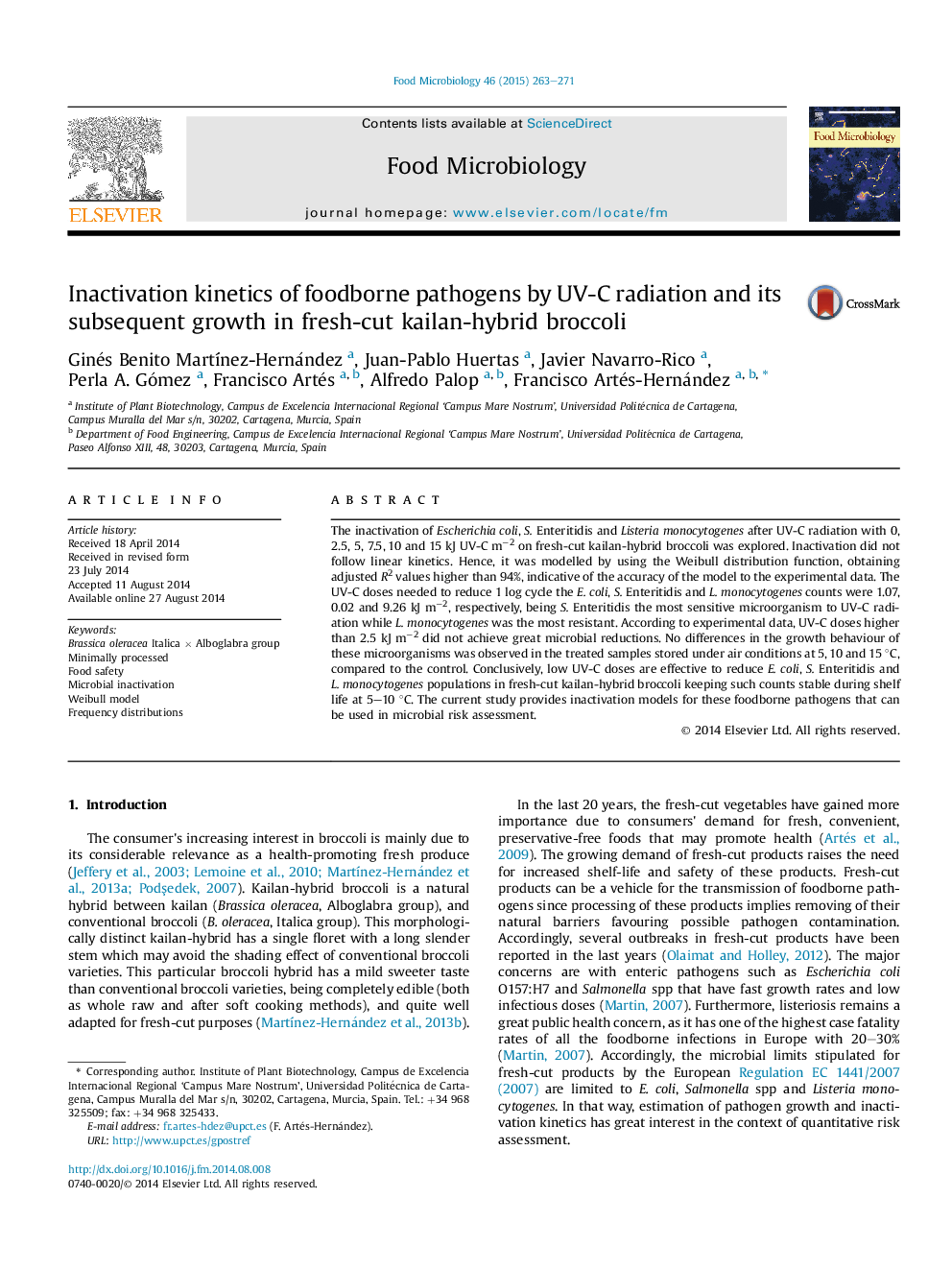| کد مقاله | کد نشریه | سال انتشار | مقاله انگلیسی | نسخه تمام متن |
|---|---|---|---|---|
| 6288553 | 1616254 | 2015 | 9 صفحه PDF | دانلود رایگان |
عنوان انگلیسی مقاله ISI
Inactivation kinetics of foodborne pathogens by UV-C radiation and its subsequent growth in fresh-cut kailan-hybrid broccoli
ترجمه فارسی عنوان
سینتیک غیر فعال سازی پاتوژن های مواد غذایی توسط اشعه ماوراء بنفش و رشد آن در کلم بروکلی کایالان
دانلود مقاله + سفارش ترجمه
دانلود مقاله ISI انگلیسی
رایگان برای ایرانیان
کلمات کلیدی
موضوعات مرتبط
علوم زیستی و بیوفناوری
علوم کشاورزی و بیولوژیک
دانش تغذیه
چکیده انگلیسی
The inactivation of Escherichia coli, S. Enteritidis and Listeria monocytogenes after UV-C radiation with 0, 2.5, 5, 7.5, 10 and 15 kJ UV-C mâ2 on fresh-cut kailan-hybrid broccoli was explored. Inactivation did not follow linear kinetics. Hence, it was modelled by using the Weibull distribution function, obtaining adjusted R2 values higher than 94%, indicative of the accuracy of the model to the experimental data. The UV-C doses needed to reduce 1 log cycle the E. coli, S. Enteritidis and L. monocytogenes counts were 1.07, 0.02 and 9.26 kJ mâ2, respectively, being S. Enteritidis the most sensitive microorganism to UV-C radiation while L. monocytogenes was the most resistant. According to experimental data, UV-C doses higher than 2.5 kJ mâ2 did not achieve great microbial reductions. No differences in the growth behaviour of these microorganisms was observed in the treated samples stored under air conditions at 5, 10 and 15 °C, compared to the control. Conclusively, low UV-C doses are effective to reduce E. coli, S. Enteritidis and L. monocytogenes populations in fresh-cut kailan-hybrid broccoli keeping such counts stable during shelf life at 5-10 °C. The current study provides inactivation models for these foodborne pathogens that can be used in microbial risk assessment.
ناشر
Database: Elsevier - ScienceDirect (ساینس دایرکت)
Journal: Food Microbiology - Volume 46, April 2015, Pages 263-271
Journal: Food Microbiology - Volume 46, April 2015, Pages 263-271
نویسندگان
Ginés Benito MartÃnez-Hernández, Juan-Pablo Huertas, Javier Navarro-Rico, Perla A. Gómez, Francisco Artés, Alfredo Palop, Francisco Artés-Hernández,
